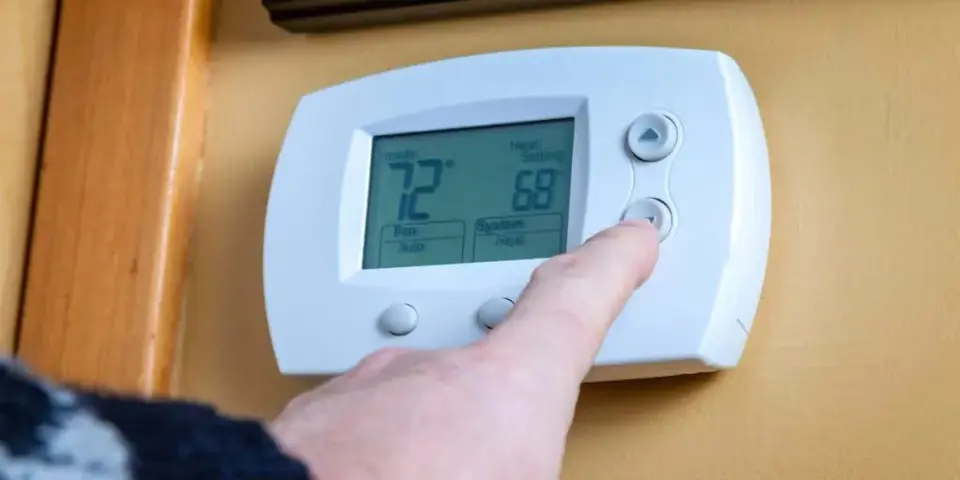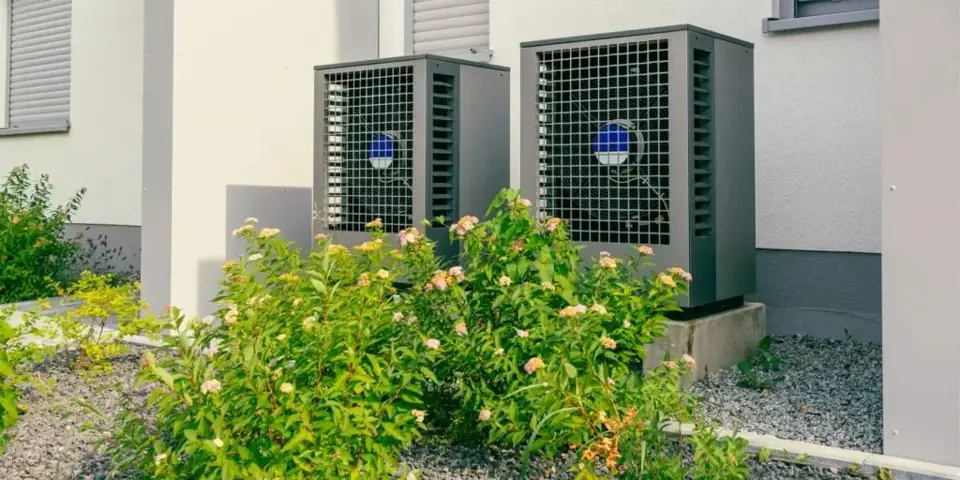In today’s fast-paced business world, the health and productivity of employees are more important than ever. Companies are investing in ergonomic furniture, wellness programs, and flexible work arrangements to keep their teams happy and efficient. But there’s one critical factor that often goes unnoticed: indoor air quality (IAQ). For businesses in the San Francisco Bay Area, where commercial spaces range from high-rise offices to bustling retail stores and industrial facilities, maintaining optimal IAQ is not just a matter of comfort—it’s a necessity for health, compliance, and operational success.
At the heart of indoor air quality is your commercial air conditioning (AC) system. More than just a tool for temperature control, your AC system is a complex network that manages filtration, ventilation, and humidity. Each of these elements plays a vital role in determining the quality of the air your employees breathe every day. In this comprehensive blog, we’ll explore how these three pillars—filtration, ventilation, and humidity control—impact employee health and productivity, and why partnering with a trusted HVAC and refrigeration expert like R & R Refrigeration and Air Conditioning is essential for businesses in the Bay Area.
Understanding Indoor Air Quality (IAQ)
Indoor air quality refers to the condition of the air inside buildings as it relates to the health and comfort of occupants. Poor IAQ can result from a variety of factors, including inadequate ventilation, poor filtration, high humidity, and the presence of pollutants such as dust, mold, volatile organic compounds (VOCs), and bacteria.
The Environmental Protection Agency (EPA) has consistently ranked indoor air pollution among the top five environmental risks to public health. Considering that Americans spend up to 90% of their time indoors, the quality of indoor air is a critical concern—especially in commercial environments where people gather in close quarters for extended periods.
The Role of Commercial AC Systems in IAQ
Your commercial AC system is more than just a cooling device. It’s a central component in the management of indoor air quality. Here’s how:
- Filtration: Removes particulates and contaminants from the air.
- Ventilation: Brings in fresh outdoor air and expels stale indoor air.
- Humidity Control: Maintains optimal moisture levels to prevent mold and discomfort.
Let’s dive deeper into each of these areas.
Filtration: The First Line of Defense
How Filtration Works
Every commercial AC system is equipped with filters designed to capture airborne particles as air circulates through the system. These filters can range from basic fiberglass panels to advanced HEPA (High-Efficiency Particulate Air) filters, each with varying levels of effectiveness.
MERV Ratings: The Minimum Efficiency Reporting Value (MERV) is a standard that rates the overall effectiveness of air filters. The higher the MERV rating, the more particles the filter can capture. For commercial spaces, filters with a MERV rating of 8 to 13 are common, but sensitive environments like hospitals may require HEPA filters with even higher ratings.
What Filtration Removes
- Dust and Dirt: Common in high-traffic areas and construction zones.
- Pollen: Especially relevant in the Bay Area during spring and fall.
- Mold Spores: Can proliferate in damp environments.
- Bacteria and Viruses: Some advanced filters can capture microorganisms.
- VOCs and Odors: Specialized filters can absorb chemical pollutants.
Impact on Employee Health
Poor filtration allows contaminants to circulate, leading to a range of health issues:
- Allergies and Asthma: Dust, pollen, and mold can trigger respiratory problems.
- Sick Building Syndrome: Symptoms like headaches, fatigue, and irritation are often linked to poor IAQ.
- Increased Absenteeism: Employees exposed to poor air quality are more likely to take sick days.
Impact on Productivity
Studies have shown that improved air filtration can lead to:
- Better Cognitive Function: Cleaner air supports concentration and decision-making.
- Higher Morale: Employees feel more comfortable and valued.
- Reduced Errors: Fewer health-related distractions mean fewer mistakes.
Best Practices for Filtration
- Regular Filter Replacement: Change filters according to manufacturer recommendations or more frequently in high-use environments.
- Upgrade Filters: Consider higher MERV ratings or HEPA filters for sensitive areas.
- Routine Maintenance: Schedule regular inspections to ensure filters are properly installed and functioning.
Ventilation: Bringing in Fresh Air
The Importance of Ventilation
Ventilation is the process of exchanging indoor air with outdoor air. Proper ventilation dilutes indoor pollutants, controls odors, and maintains oxygen levels. In commercial buildings, ventilation is typically managed through a combination of mechanical systems (like your AC) and natural means (such as operable windows).
Types of Ventilation
- Natural Ventilation: Relies on windows, doors, and vents to allow air movement.
- Mechanical Ventilation: Uses fans, ducts, and air handlers to control airflow.
- Demand-Controlled Ventilation: Adjusts ventilation rates based on occupancy and air quality sensors.
How Ventilation Impacts IAQ
Without adequate ventilation, indoor air becomes stale and polluted. Common issues include:
- CO2 Buildup: High levels of carbon dioxide can cause drowsiness and impair cognitive function.
- Accumulation of VOCs: Chemicals from cleaning products, office equipment, and furnishings can build up.
- Spread of Pathogens: Poor ventilation can increase the risk of airborne disease transmission.
Impact on Employee Health
- Reduced Respiratory Issues: Fresh air helps remove irritants and allergens.
- Lower Risk of Illness: Proper ventilation reduces the concentration of airborne pathogens.
- Improved Comfort: Employees are less likely to experience headaches, fatigue, and eye irritation.
Impact on Productivity
- Enhanced Alertness: Adequate oxygen levels support mental clarity.
- Fewer Sick Days: Healthier employees mean less downtime.
- Better Collaboration: Comfortable environments foster teamwork and communication.
Best Practices for Ventilation
- Balance Airflow: Ensure a mix of fresh and recirculated air.
- Monitor CO2 Levels: Use sensors to track air quality and adjust ventilation as needed.
- Maintain Equipment: Regularly inspect and clean ducts, fans, and vents.
Humidity Control: The Unsung Hero
Why Humidity Matters
Humidity refers to the amount of moisture in the air. In the Bay Area, humidity levels can fluctuate dramatically, especially during seasonal changes. Your commercial AC system plays a crucial role in maintaining optimal humidity—typically between 30% and 50%.
Problems with High Humidity
- Mold Growth: Excess moisture creates a breeding ground for mold and mildew.
- Dust Mites: Thrive in humid environments, exacerbating allergies.
- Unpleasant Odors: Dampness can lead to musty smells.
Problems with Low Humidity
- Dry Skin and Eyes: Low moisture can cause discomfort and irritation.
- Static Electricity: Increases in dry environments, potentially damaging electronics.
- Respiratory Issues: Dry air can aggravate asthma and other conditions.
Impact on Employee Health
- Allergy and Asthma Control: Proper humidity reduces triggers.
- Comfort: Employees are less likely to experience dryness or excessive sweating.
- Infection Control: Balanced humidity can reduce the survival of certain viruses.
Impact on Productivity
- Fewer Distractions: Comfortable employees are more focused.
- Equipment Longevity: Proper humidity protects sensitive electronics and materials.
- Consistent Performance: Stable environments support steady work output.
Best Practices for Humidity Control
- Use Dehumidifiers or Humidifiers: Supplement your AC system as needed.
- Monitor Levels: Install sensors to track humidity in real time.
- Seal Leaks: Prevent moisture intrusion from outside sources.
The Synergy of Filtration, Ventilation, and Humidity Control
While each element—filtration, ventilation, and humidity control—plays a unique role, their combined effect is what truly determines indoor air quality. A well-maintained commercial AC system integrates all three, creating a healthy, comfortable, and productive environment.
Integrated Solutions
Modern commercial HVAC systems offer integrated controls that allow facility managers to monitor and adjust filtration, ventilation, and humidity from a single interface. Smart sensors and automation can optimize settings based on occupancy, weather, and air quality data, ensuring peak performance and energy efficiency.
The Cost of Neglect
Ignoring IAQ can have serious consequences:
- Health Risks: Increased absenteeism, higher healthcare costs, and potential liability.
- Productivity Losses: Reduced output, more errors, and lower morale.
- Equipment Damage: Dust and moisture can shorten the lifespan of electronics and machinery.
- Regulatory Fines: Failure to meet IAQ standards can result in penalties.
Why Work with R & R Refrigeration and Air Conditioning?
Since 1958, R & R Refrigeration and Air Conditioning has been a trusted partner for commercial HVAC and refrigeration solutions in San Jose and the greater Bay Area, including San Francisco, Santa Clara County, San Mateo County, and Alameda County. Our team specializes in walk-in cooler construction, commercial refrigeration, and all aspects of HVAC system design, installation, and maintenance.
What Sets Us Apart
- Expertise: Decades of experience with commercial systems of all sizes and complexities.
- Customized Solutions: We tailor our services to meet the unique needs of your business.
- Cutting-Edge Technology: We stay ahead of industry trends to offer the latest in IAQ management.
- Responsive Service: Our technicians are available for emergency repairs and routine maintenance.
- Commitment to Quality: We use only the best materials and equipment to ensure long-lasting results.
Take Control of Your Indoor Air Quality
The connection between indoor air quality and your commercial AC system is undeniable. By prioritizing filtration, ventilation, and humidity control, you can create a healthier, more productive workplace for your employees. Don’t leave your IAQ to chance—partner with experts who understand the unique challenges of commercial environments in the Bay Area.
Ready to improve your indoor air quality?
Contact R & R Refrigeration and Air Conditioning today for a consultation. Whether you need a system upgrade, routine maintenance, or a custom solution, our team is here to help your business breathe easier and perform better.
Frequently Asked Questions about Commercial ACs and Indoor Air Quality
Filter replacement frequency depends on the type of filter, system usage, and environmental factors. Generally, filters should be checked monthly and replaced every 1-3 months, but high-traffic or dusty environments may require more frequent changes.
Common signs include persistent odors, visible dust, increased employee complaints about allergies or respiratory issues, and higher rates of absenteeism. Monitoring air quality sensors can provide more precise data.
Yes! Studies show that better air quality leads to improved cognitive function, fewer sick days, and higher morale—all of which contribute to greater productivity.
Proper humidity levels help prevent condensation and mold growth, which can damage refrigeration equipment and stored goods. Maintaining balanced humidity also extends the lifespan of your systems.
With over 65 years of experience in the Bay Area, R & R offers expert guidance, customized solutions, and reliable service for all your commercial HVAC and refrigeration needs. We’re committed to helping your business thrive with clean, healthy air.






